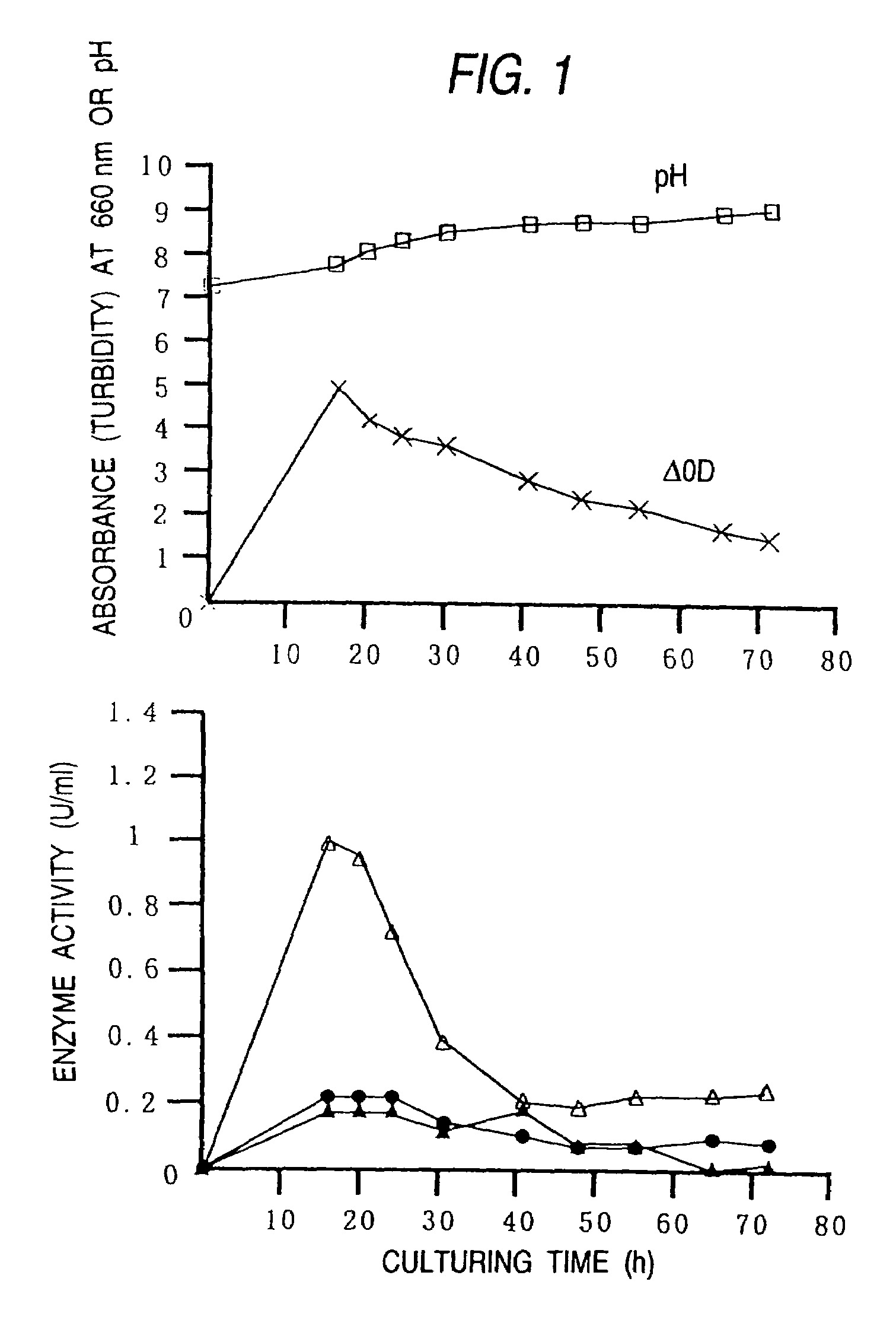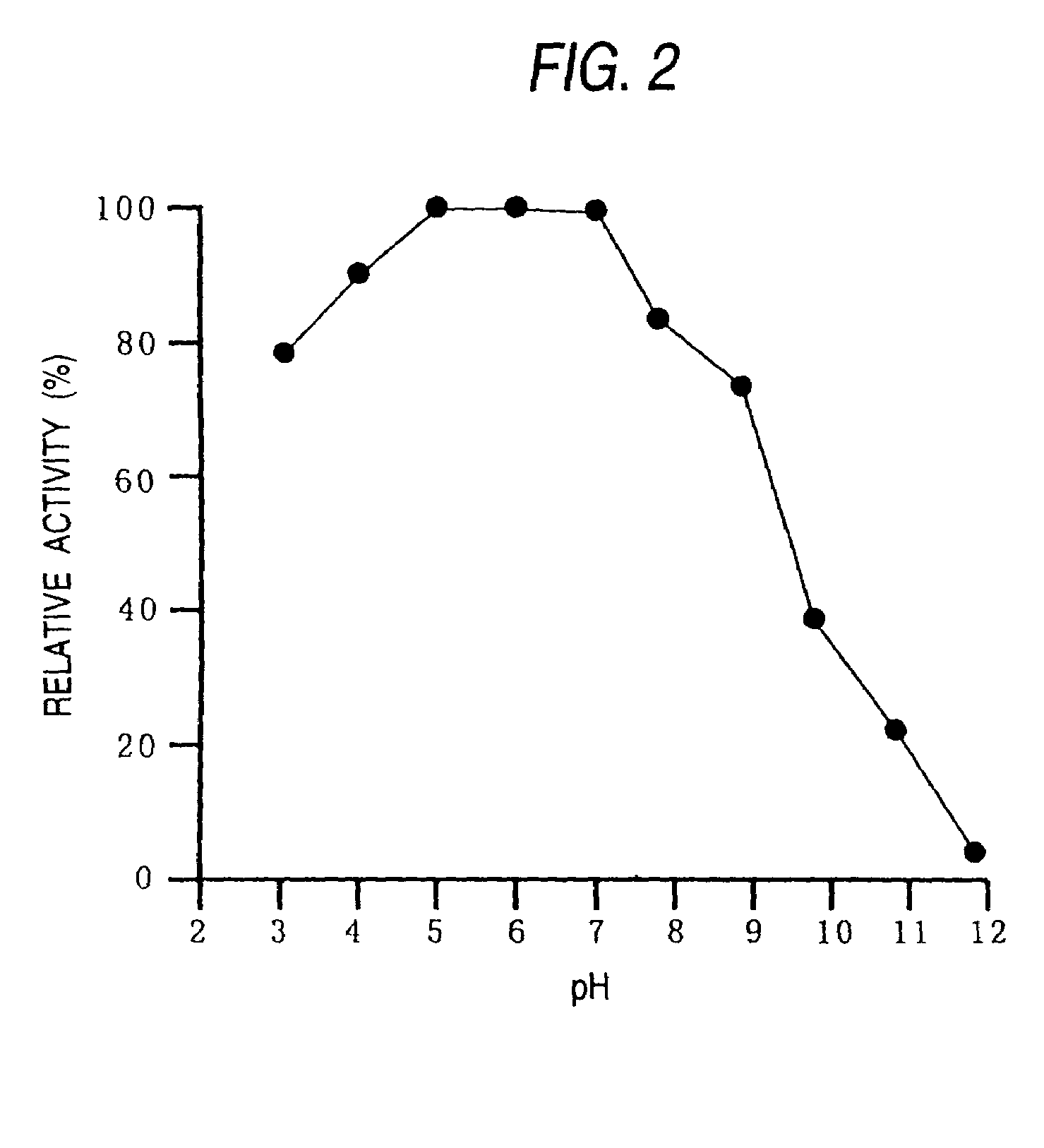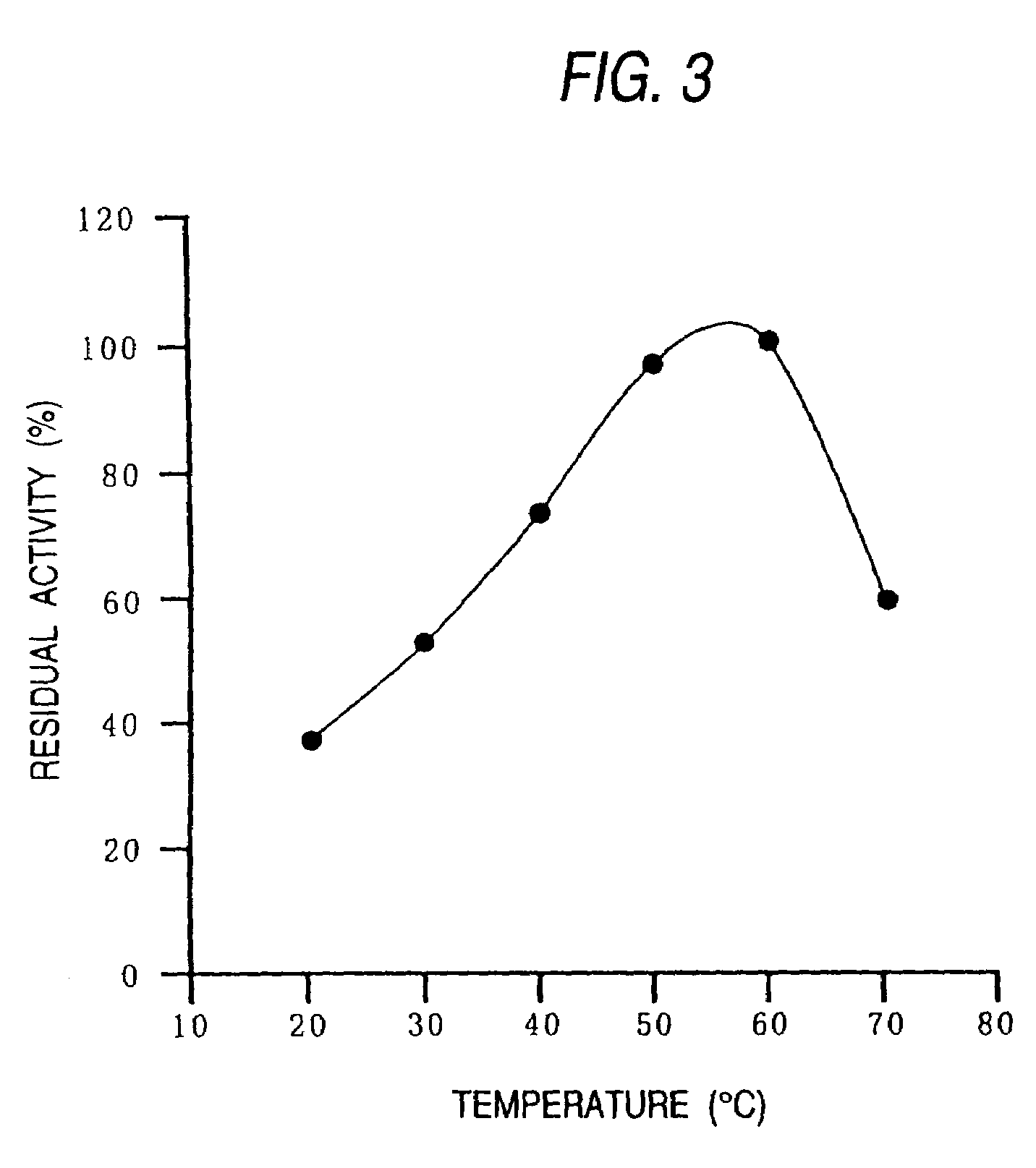Protein-deamidating enzyme, gene encoding the same, production process therefor, and use thereof
a technology of protein deamidation and enzyme, which is applied in the field of new enzymes, can solve the problems of hardly acting enzymes upon high molecular weight proteins, reaction is non-specific, and deamidation occurs, so as to/or food, improve the extraction efficiency, and improve the functionality of proteins.
- Summary
- Abstract
- Description
- Claims
- Application Information
AI Technical Summary
Benefits of technology
Problems solved by technology
Method used
Image
Examples
example 1
[0130]Chryseobacterium gleum JCM 2410 was cultured on a shaker at 30° C. for 6 days using the aforementioned lactose medium. Time course of the culturing is shown in FIG. 1.
example 2
[0131]Chryseobacterium indologenes IFO 14944, Chryseobacterium meningosepticum IFO 12535 and Chryseobacterium balustinum IFO 15053 were cultured in the same manner as described in Example 1. Time courses of their culturing are shown in FIGS. 6 to 8.
example 3
[0132]Flavobacterium aquatile IFO 15052 was cultured in the same manner as described in Example 1. The protein-deamidating enzyme activity in the culture broth is shown in Table 3.
PUM
| Property | Measurement | Unit |
|---|---|---|
| pH | aaaaa | aaaaa |
| temperature | aaaaa | aaaaa |
| temperature | aaaaa | aaaaa |
Abstract
Description
Claims
Application Information
 Login to View More
Login to View More - R&D
- Intellectual Property
- Life Sciences
- Materials
- Tech Scout
- Unparalleled Data Quality
- Higher Quality Content
- 60% Fewer Hallucinations
Browse by: Latest US Patents, China's latest patents, Technical Efficacy Thesaurus, Application Domain, Technology Topic, Popular Technical Reports.
© 2025 PatSnap. All rights reserved.Legal|Privacy policy|Modern Slavery Act Transparency Statement|Sitemap|About US| Contact US: help@patsnap.com



